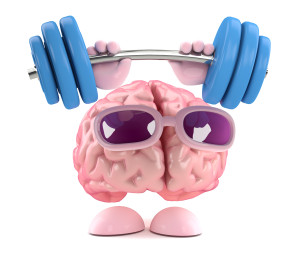It’s February and therefore it’s time to celebrate National Senior Independence Month. Sadly, popular culture has never been kind to older folks.
From the loathly lady of Medieval tales to the aging (and therefore evil) stepmothers and hideous crones and witches of Regency and Victorian fairy tales to countless unflattering contemporary portrayals in films, tv shows, and books, characters of a “certain age” tend to be stereotyped, dehumanized, or completely absent.
What does this have to do with the myths of aging?
A lot.
Representation matters, and even though there have been some improvements in the way elders are portrayed in modern media, there is still a lot to be desired.
These myths would have us believe that old age is a time of vulnerable infirmity, loneliness, obsolescence, and general incompetence. Based on the stories we’ve been told, no one could blame us for assuming that the best we can hope for is to fade quietly into the background as our bodies fall apart and our mind wanders.
But this disheartening assumption could not be farther from the truth.
As it turns out, not only are the scary stories about getting old patently untrue, there are actually some benefits to getting older.
Who knew?
Myth #1: Growing old means becoming dependent on others and giving up your independence.
The sales pitches for long-term care, assisted living, and nursing home facilities often include frightening statements like, “70% of adults aged 65 years and older will require long-term care at some point.”
What those statements don’t say is that “long-term care” includes things like temporary rehabilitation. In fact, according to the American Psychological Association, only about 5% of older Americans live in nursing homes at any given time. Today, as medicine improves and longevity increases, more and more adults are staying healthy and independent well into their 70s, 80s, and even beyond.
Myth #2: Old age is often accompanied by a need for financial austerity.
While it always pays to manage your money wisely and with an eye to the future, the risk of financial insecurity is not quite as universally dire as some stereotypes would have you believe. Based on data from the Federal Reserve, the median net worth of Americans under 35 years old is only $14,000 while the median net worth of older Americans (aged 65 to 74) is $266,070. In fact, older Americans possess a large percentage of the nation’s discretionary income, and — according to the AARP — collectively spend $179 billion each year on their grandchildren, including gifts, vacations, education, and daily necessities.
 Myth #3: The older you are, the less sleep you need.
Myth #3: The older you are, the less sleep you need.
You hear it all the time: older folks who feel like they are getting by on less and less sleep each year. The truth behind this phenomenon is that human beings need 7 to 9 hours of sleep each night no matter what age they are.
As you get older, you may find it more challenging to get to sleep and stay asleep. But it’s still important to get the full amount of shut eye. Sometimes, this means taking naps to supplement the shorter periods of nighttime sleep, and that’s okay.
Myth #4: There is no escaping a loss of cognitive function.
This is one of the more dangerous myths because it can lead to people assuming that certain symptoms are just “par for the course” when they should be addressed with a physician as soon as possible. While it is true that the risk of dementia (including Alzheimer’s) increases as we get older, it is not an inevitable fate.
Minor and infrequent forgetfulness is a pretty normal side effect of aging. But stress, anxiety, lack of sleep, and hormonal changes can trigger the same kind of mild trouble focusing or remembering things. It’s important to avoid assuming (and accepting) that you will lose cognitive function as a matter of course. It’s also important to see a doctor about any acute symptoms.
 Myth #5: An aging body is a weak body that should not be exercised.
Myth #5: An aging body is a weak body that should not be exercised.
One of the most prevalent media stereotypes about seniors is that their bodies are weak and vulnerable and prone to accidents and injury. It was 1989 when LifeCall ran the ad with the iconic line, “I’ve fallen, and I can’t get up!” — a line that still haunts us to this day.
There’s no doubt that as we age, we have to deal with a variety of physical changes and challenges. And for people who have chronic conditions or other constraints, it’s important to get expert guidance on the right kind of exercise regimen. That said, for most older folks, the benefits of exercise far outweigh the risks.
When it comes to our athletic abilities, the old, “use it or lose it” approach is pretty good advice. This doesn’t mean you need to run out and sign up for a triathlon, but — for most people — engaging in regular exercise (walking, Tai Chi, swimming, biking, and so forth) are highly recommended over allowing yourself to become a couch potato.
Myth #6: Depression and loneliness are just part of the “Golden Years” package.
Loneliness and depression are very serious issues at any age, but especially when we get older. A Scientific American article points out that loneliness has been estimated to shorten a person’s life by 15 years, which is roughly equivalent to the negative impact of being obese or smoking 15 cigarettes per day.
But, while feelings of isolation, anxiety, and sadness are undoubtedly harmful, they are not a normal part of growing older. Many seniors continue to live vibrantly social and engaged lives, even after the loss of a spouse and even if they are living alone.
Living alone, by the way, is not the same as being lonely. As a Psychology Today article points out, many people — even older people — relish living on their own, and wouldn’t have it any other way.
Myth #7: After a certain point, you just can’t teach an old dog new tricks.
This is another old yarn that has become part of our cultural tradition, but the idea of older people being so set in their ways and so unable to learn that it’s impossible for them to grow or evolve is completely untrue. Just like with the health of our muscles and bones, our brains can also benefit from following the “use it or lose it” approach to living.
An article in TIME magazine explains that our brains retain their neuroplasticity throughout our lives, which means that our brains can always learn new things and make new neural connections. In fact, it isn’t until we reach our senior years (between the ages of sixty and eighty) that the brain’s processing capacities reach their greatest potential. At this stage in our development, the two halves of the brain learn to work together more closely than at any other point in our lives.
 This left/right brain synergy enables three distinct (and valuable) types of thinking that are mostly unavailable to us until we hit our fifties.
This left/right brain synergy enables three distinct (and valuable) types of thinking that are mostly unavailable to us until we hit our fifties.
- Relativistic thinking helps us step away from simplistic black-and-white thinking to take in the nuanced reality of the world;
- Non-dualistic thinking helps us process disparate views without judgment, and also makes it easier for us to experience empathy; and
- Systematic thinking allows us to see the big picture instead of only the parts that are right in front of us.
The combination of these ways of thinking unlocks deep well of not only intelligence, but also creativity and wisdom.
Lastly, your mindset about aging matters more than you might expect.
In 1968, American gerontologist and sociologist Robert Atchley launched a study that would later become the foundation of the Ohio Longitudinal Study of Aging and Adaptation (OLSAA), which took place between 1975 and 1999. In this study, more than 1,100 people answered a set of survey questions that included some designed to measure attitudes toward aging. For example, participants were asked to agree or disagree with statements such as “I am as happy now as I was when I was younger,” and “As you get older, you get less useful.”
 Decades after the initial survey responses had been collected, Yale University psychologist Becca Levy, PhD, set out to use Atchley’s original data to investigate whether (and how) people’s attitudes about aging might influence their lifespans. By collecting death records and matching those records with each participant’s survey responses (and controlling for other relevant factors), Levy uncovered a surprising and significant trend: On average, people with positive views of their own aging lived 7.6 years longer than their counterparts who held negative views about getting older.
Decades after the initial survey responses had been collected, Yale University psychologist Becca Levy, PhD, set out to use Atchley’s original data to investigate whether (and how) people’s attitudes about aging might influence their lifespans. By collecting death records and matching those records with each participant’s survey responses (and controlling for other relevant factors), Levy uncovered a surprising and significant trend: On average, people with positive views of their own aging lived 7.6 years longer than their counterparts who held negative views about getting older.
Based on this landmark study, it’s easy to see why stereotypes that may seem harmless and funny can actually pose a very real threat to our wellbeing and longevity. As we’ve already said, representation matters, and we need more positive examples of aging in our media and in our real-world lives. We have the power to bust these aging myths for ourselves, and for the generations that come after.
Related Posts:
Aging Well – Healthy Eating Tips for Older Adults
Positive Aging: Why It Matters and Where to Start
10 Good Things About Getting Older
Ageism is Demeaning: How to Address it in a Health Care Setting
Finding Employment After 50: 10 Tips to Get the Job You Want
 Connecticut Estate Planning Attorneys Blog
Connecticut Estate Planning Attorneys Blog



